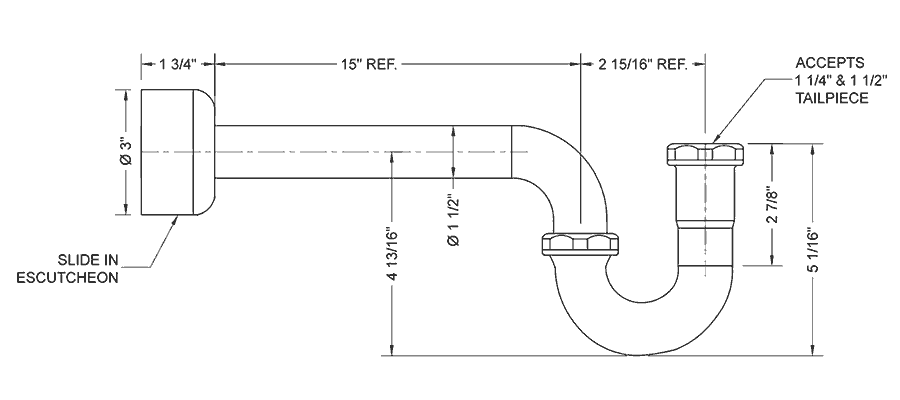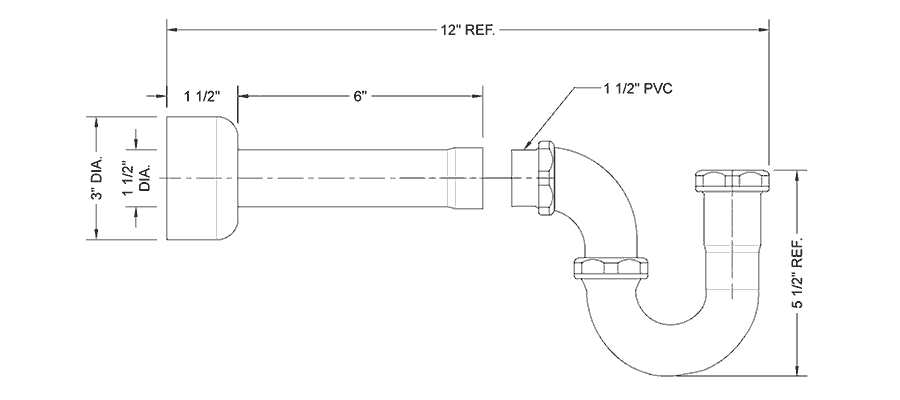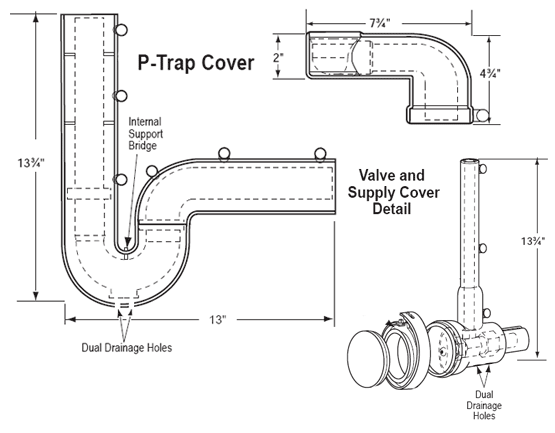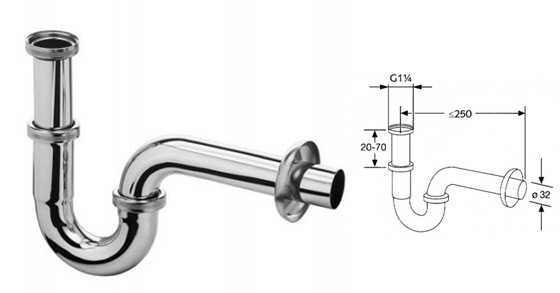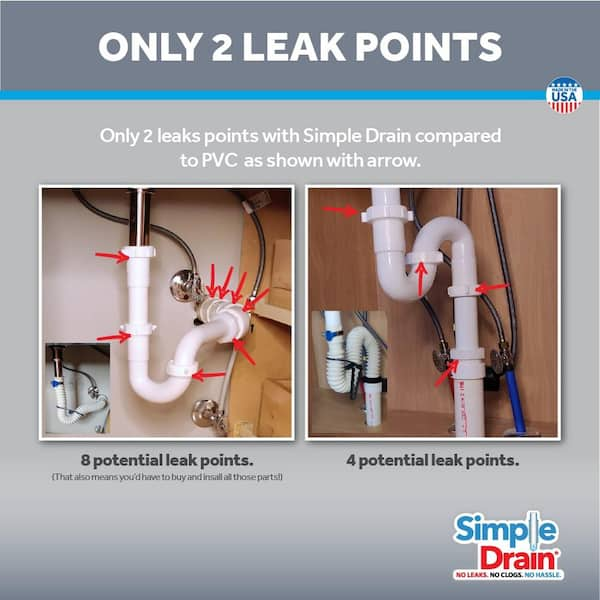When it comes to plumbing, the P-trap is a vital component, especially for bathroom sinks. Understanding the appropriate P-trap size for your bathroom sink is crucial for efficient drainage and preventing clogs. The P-trap is the curved section of pipe under the sink that traps water, creating a barrier that prevents sewer gases from entering your home while allowing wastewater to flow freely.
One essential factor in determining the appropriate P-trap size is the size of the sink itself. Larger sinks with multiple basins may require a larger P-trap to accommodate the increased volume of water and waste. Conversely, smaller sinks may be adequately served by a smaller P-trap. Additionally, the distance between the sink drain and the wall or floor outlet will influence the size of the P-trap needed.

Another consideration is the building code requirements in your area. Building codes often dictate the minimum size of P-traps to ensure proper drainage and sanitation. These codes may vary depending on the location and jurisdiction, so it’s essential to consult local regulations or a professional plumber to ensure compliance.
The material of the P-trap is also worth considering. While most P-traps are made of PVC or ABS plastic, they are also available in metal, such as chrome-plated brass. The material chosen can impact the durability and longevity of the P-trap, as well as its resistance to corrosion and other forms of damage.
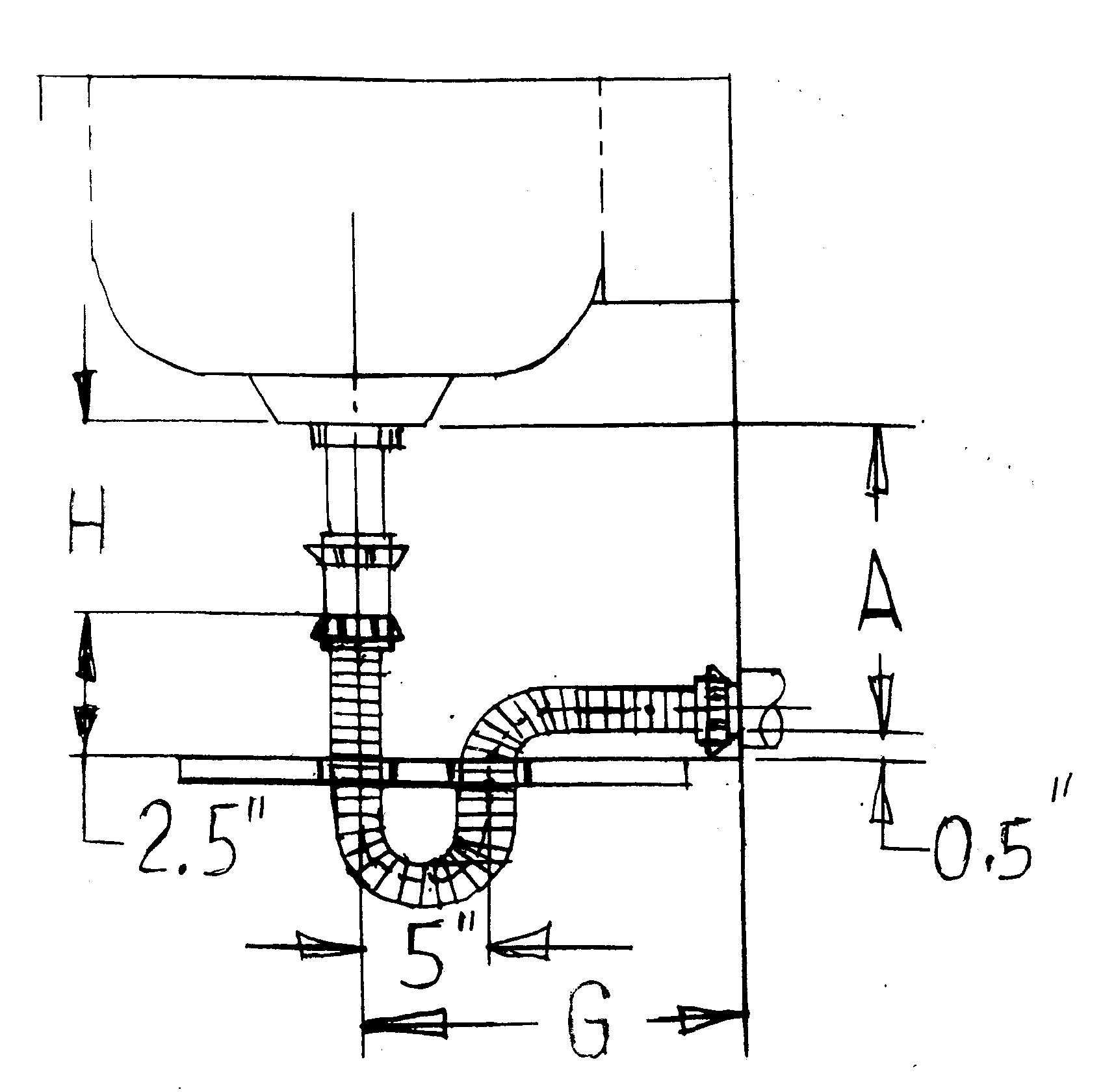
Proper installation of the P-trap is crucial for its effectiveness. It should be installed securely and sealed tightly to prevent leaks. Additionally, the P-trap should be positioned correctly to ensure optimal drainage and prevent water from pooling or stagnating.
Regular maintenance is key to ensuring the continued efficiency of the P-trap. Periodically checking for clogs or buildup of debris can help prevent blockages and maintain proper drainage. If you encounter persistent issues with your P-trap, such as frequent clogs or foul odors, it may be a sign of a larger plumbing problem that requires professional attention.
Selecting the appropriate P-trap size for your bathroom sink involves considering factors such as the size of the sink, building code requirements, material, installation, and maintenance. By understanding these factors and taking proper precautions, you can ensure efficient drainage and a healthy plumbing system in your bathroom.
Decorative P-Traps – fancy bathroom drains
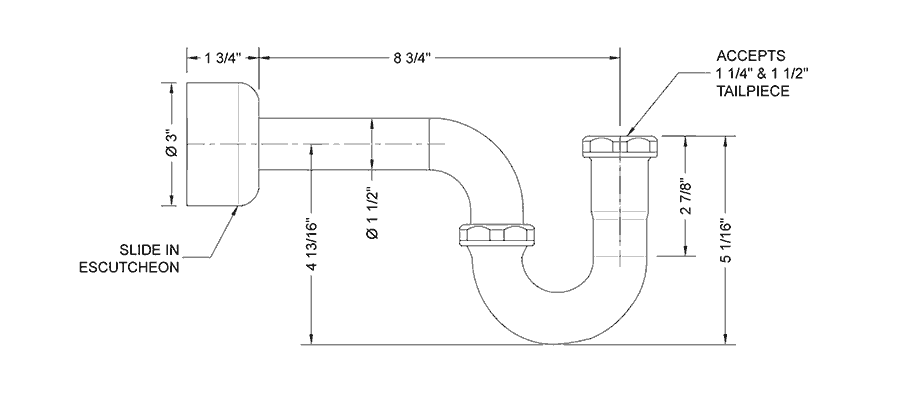
Decorative P-Traps – fancy bathroom drains
Decorative P-Traps – fancy bathroom drains
Under-sink injury prevention products for the safety of wheelchair
How to Replace a Sink Trap
P-Trap Installation Drain Doesnu2019t Line Up Bathroom Sink Pipe
Bathroom Sink P-Traps Sanliv Sanitary Wares
Standard Sink Drain Size for Kitchen and Bathroom – M2B
I need to see you, Plumbing Traps and Vents NCW Home Inspections
Need feedback on sink P-trap below floor level Terry Love
SIMPLE DRAIN 1.25 in. Rubber Threaded P-Trap Bathroom Single Sink
Keeney 400PVCK PVC P-Trap Pipe Kit with Reducing
Related articles:
- Ada Bathroom Sink Height Requirements
- Bathroom Sink Is Clogged How To Fix
- Bathroom Sink Miranda
- Cheap Bathroom Sink Ideas
- Bathroom Sink And Makeup Vanity
- Can I Paint A Bathroom Sink
- Can Bleach Unclog A Bathroom Sink
- Bathroom Sink Drain Adapter
- Bathroom Sink Drain Brushed Nickel
- Bathroom Sink Units Ireland
When it comes to bathroom plumbing, one of the most important components is the P trap. This essential piece of plumbing prevents sewer gas from entering your home and helps to keep your bathroom clean and hygienic. However, choosing the right size P trap for your bathroom sink can be a bit confusing. In this article, we will take a detailed look at the factors that determine P trap size for bathroom sinks and answer some frequently asked questions about this crucial plumbing component.
What is a P Trap?
Before we dive into the specifics of P trap sizing, let’s take a moment to discuss what a P trap actually is. A P trap is a curved section of pipe that is installed beneath your bathroom sink. Its distinctive shape resembles the letter “P,” hence the name. The U-shaped bend in the pipe holds water, which creates a barrier between the sewer system and your home. This prevents unpleasant odors from entering your living space.
Why is P Trap Sizing Important?
Choosing the right size P trap for your bathroom sink is critical because it ensures that the drain functions correctly. If the P trap is too small or too large, it can affect the flow of water and lead to clogs or other plumbing issues. Additionally, an incorrectly sized P trap may not provide enough of a water barrier to prevent sewer gases from entering your home.
Factors That Determine P Trap Size for Bathroom Sinks
Several factors determine what size P trap you need for your bathroom sink. These include:
Sink Size: The size of your sink basin will play a significant role in determining what size P trap you need. A larger sink may require a larger P trap to ensure proper drainage.
Drain Opening Size: The diameter of your sink’s drain opening will also impact what size P trap you need. Be sure to measure this accurately before purchasing a new P trap.
Distance from Sink to Drain Pipe: The distance between your sink and the drain pipe will also impact P trap sizing. If the distance is greater than usual, you may need a larger P trap to ensure optimal flow.
Local Plumbing Codes: Finally, it’s essential to review your local plumbing codes to ensure that you choose a P trap that meets the necessary requirements.
How do I measure the drain opening on my sink?
To measure your sink’s drain opening, you’ll need a tape measure. Simply measure across the widest part of the opening from one side to the other.
Can I install a larger P trap than recommended for my sink?
It’s generally not recommended to install a larger P trap than what is recommended for your sink. Doing so can cause water to pool in the P trap, which can lead to foul odors and bacteria growth.
What happens if my P trap is too small?
If your P trap is too small, it can cause water to drain too quickly, which can lead to clogs and other plumbing issues. Additionally, a smaller P trap may not provide enough of a water barrier to prevent sewer gases from entering your home.
Choosing the right size P trap for your bathroom sink is crucial for ensuring proper drainage and preventing unpleasant odors from entering your living space. By considering factors such as sink size, drain opening size, distance from sink to drain pipe, and local plumbing codes, you can select a P trap that meets your needs. Be sure to take accurate measurements and review any applicable plumbing codes before making your purchase. With the right size P trap in place, you can enjoy a clean and hygienic bathroom that functions properly for years to come.
What is the standard P trap size for a bathroom sink?
The standard P trap size for a bathroom sink is 1 1/4 inches in diameter.
